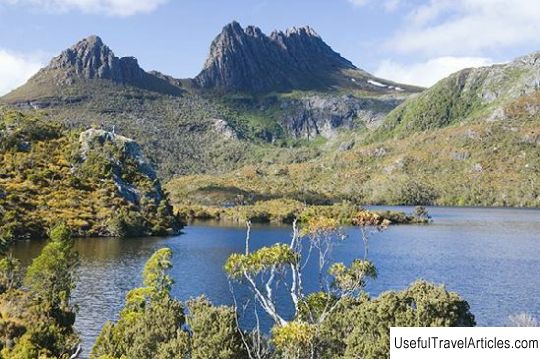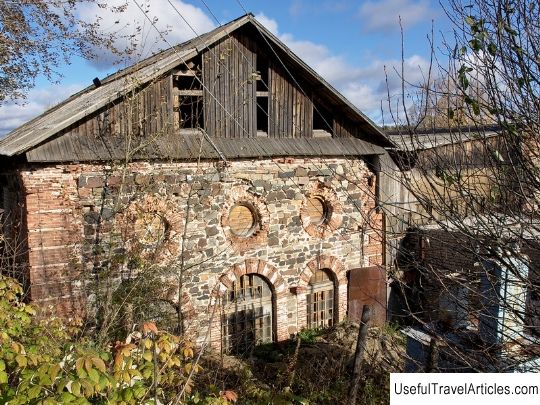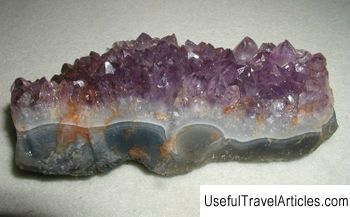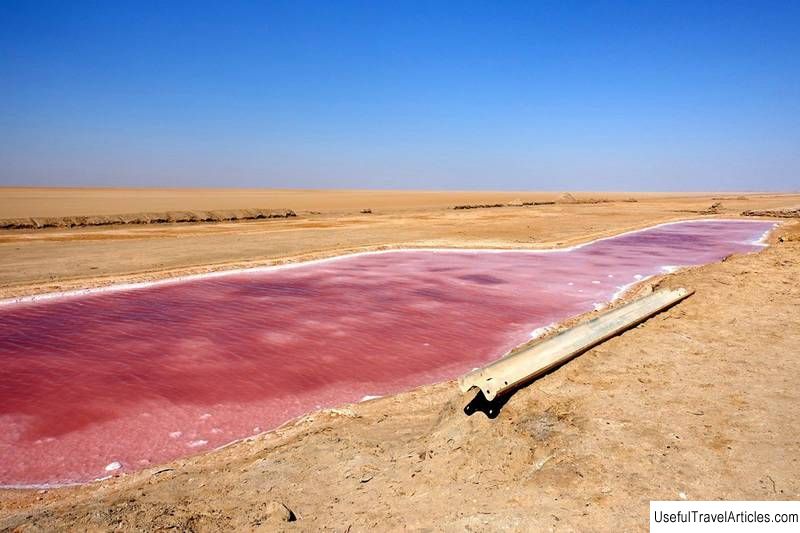Voitsky copper mine description and photos - Russia - Karelia: Segezha district
Rating: 8,2/10 (293 votes) 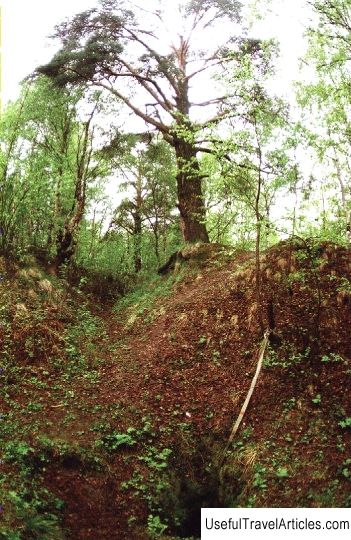
Voitsky copper mine description and photos - Russia - Karelia: Segezhsky district. Detailed information about the attraction. Description, photos and a map showing the nearest significant objects. Photo and descriptionFor a long time, Russia did not have its own domestic gold, but took it as a reward in military campaigns. But it soon became clear that Russia also has its own reserves of gold. The first mine was discovered in Karelia, namely in Nadvoitsy. Voitsky mine is located on the right bank of the Nizhny Vyg river, or rather at its source on a peninsula, almost completely surrounded by water. On the peninsula, the Voitskaya mountain rises with a height of 14 meters; it consists of slate and is cut by a crevice on the east side, 80 meters long. It was along the crevice that the quartz vein passed. It was possible to find in it: talcum, pyrite, copper greens and blue, ocher, native copper, mirror spar and gold. Taras Antonov, who is a Nadvoyan, mined a couple of pieces of ore and presented them to the office of the mining factories of Petrozavodsk in 1737, having discovered the place of ore mining. Five years later, namely in 1742, work began on the extraction of copper ore from the found vein, and it was not at all assumed that there was also gold here. The mined ore was delivered to the Olonetsk copper smelters. A couple of years later, knowledgeable and experienced people paid attention to the expensive metal in the vein, and already on November 21, 1744, a sample of ore was delivered to Empress Elizabeth Petrovna, which contained gold from the Voitsky mine. On December 15 of the same year, the Empress approved new searches for gold. This is how the first place of gold mining in Russia was discovered. Only the next year in the Urals were discovered Berezovsky state gold mines, founded in 1752. At the Voitsky mine, a shock-washing factory was built, located just below the course of the river, near a waterfall on the left bank. The factory had a crush for crushing ore, as well as cradles for washing it. Andreyan Shamshev was dispatched to the mine site to conduct intensive research on the ore. On April 1, 1745, 12 samples containing gold were sent to Elizaveta Petrovna, after which the Empress, by a decree on April 19, decided to appoint Mr. Shamshev as the chief manager of the mine. At the same time, she pointed out that a necessary measure during the work is to be attentive when searching workers leaving the mine. In addition, the mine was constantly monitored by the head and sealed with a seal. Soon in 1756, the Voitsky mine was given over to the Nerchinsk expedition, which was then engaged in the extraction of precious metals and was located in St. Petersburg. Gold mining here was especially difficult, because most of it was washed out by the waters of the Vyg River, and it took a lot of effort to carry out the drainage, which employed 42 people. A few years later, the Nerchinsk expedition concluded that the work on the mine, but the Senate did not agree with this, and work continued. Later, in 1770, Catherine II issued a decree terminating work at the Voitsky mine. But the decree did not prohibit private entrepreneurs from taking the mine into their maintenance. The mine was completely closed for lack of offers, and the workers were transferred to various factories in Petrozavodsk. Nadvoitsky peasants were instructed to carefully monitor the appearance of buildings at the mine. In 1772, the management of the mine was transferred to Alexander Glatkov, a graduate of Moscow University. Hiring miners, Glatkov organized work to pump out water using manual work, and after three months the desired result was achieved. Then the workers began to make their way through the mine workings. During 1773, 4 kg of gold were mined. Success accompanied Glatkov thanks to the creation of a horse-drawn drainage machine, built in 1774. It was during this period that the largest nuggets weighing from 400 grams to 1355 grams were mined, which were sent to St. Petersburg. Since 1772, the shock-washing factory was restored, but was soon stopped again. Over time, they came to the conclusion that the vein had already been worked out. More than once attempts were made to extract gold, but this did not instill the expected results. In 1794, the empress decided to completely terminate the operation of the mine. For all the time of work in the Karelian mine, 74 kg of gold were found, from which a large number of beautiful jewelry was created.   We also recommend reading Basilica of Bom Jesush description and photos - India: Goa Topic: Voitsky copper mine description and photos - Russia - Karelia: Segezha district. |
